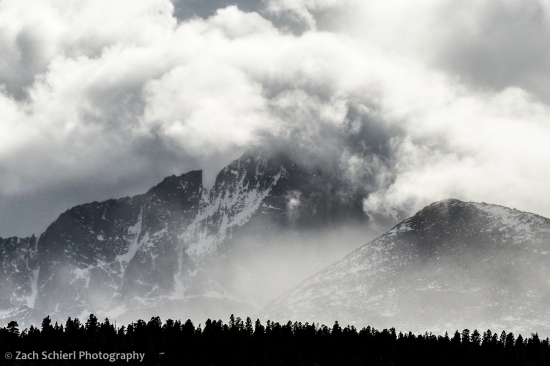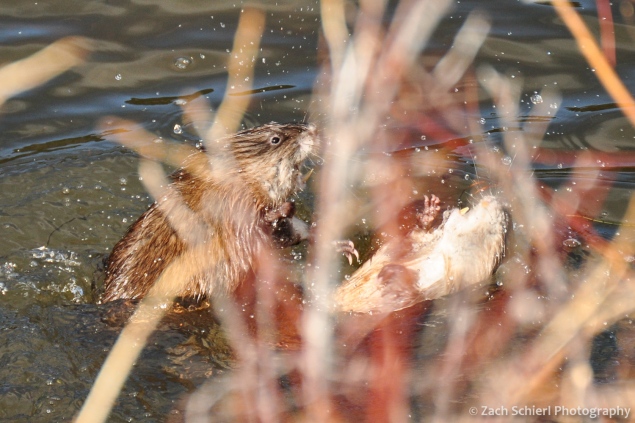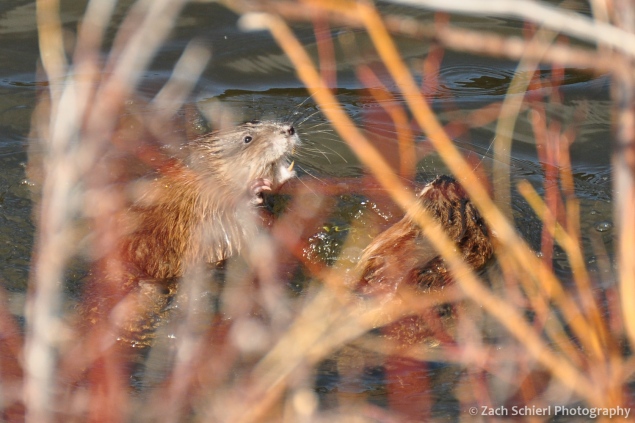Rocks and (Musk)Rats of the Rockies

Textbook stream meanders along the Fall River, Rocky Mountain National Park, Colorado
A few weekends back I led my semester-ly geology field trip to Rocky Mountain National Park. Each time I end up finding new gems that I had previously overlooked, such as the spectacular stream meanders along the Fall River pictured above. One good flood and the stream will erode through the narrow strip of land separating the two meanders, leaving the bend in the middle of the photo high and dry. Places like this are a great opportunity for students to see in action a geologic process that every introductory geology instructor teaches in the classroom.
Despite many areas of the park still being covered in umpteen feet of snow, wildflowers are beginning to appear in the lower elevations around Estes Park:

Early blooming pasqueflower in Moraine Park, Rocky Mountain National Park, Colorado

Longs Peak shrouded in a late-season storm, Rocky Mountain National Park, Colorado
The biggest cause for excitement actually occurred after the field trip was over. I had intended to stick around in the park for a longer hike after setting the students free, but I quickly realized I had left my filled camelback on the kitchen counter. Lacking any sort of water carrying device, not wanting to shell out the cash to buy one, nor desiring to try to fashion one out of ungulate intestines, that plan was foiled. In lieu of a hike I headed for a short stroll around Lily Lake to try to get some pictures of the incoming storm enveloping Longs Peak.
While snapping the above photo, I was startled by what sounded like a cannonball being dropped into the lake behind behind me. My initial suspicion of hooligans launching boulders into the lake was discredited when I turned around and saw no one within half a mile. I made my way to the edge of the lake and remained motionless; after a few moments, this little guy appeared:

Beaver? Otter? Furry fish?

Lily Lake, Rocky Mountain National Park, Colorado
Noticing the presence of a nearby mass of chewed up sticks (above), I hastily assumed I was in the presence of a beaver. In short time, a second critter appeared and the pair began to tussle, albeit sadly behind a willow bush from my point of view. It soon became clear that these animals were more agile and less chunky and rotund than your typical beaver. Not being able to see them clearly with the naked eye, my next guess was river otter, which persisted until I got home and took a closer look at the pictures below. Otters would have a tough time leading their carnivorous lifestyles with only those gigantic incisors to work with. I was out of ideas (this is why I lead geology field trips, not wildlife watching trips…) , so I was forced to the internet where I learned that I had just seen my first muskrat.

Two combative muskrats in Lily Lake, Rocky Mountain National Park

Nice teeth!
Finally, on the way home, I made a quick stop at a rock shop in Estes Park that I’ve driven past dozens of times. I quickly discovered that knowledge of basic geological principles is not a prerequisite for owning a rock shop when I found a large bin of black limestone labeled:

{facepalm}
LOL, fossilized basalt? We have a fossilized basalt flow that stopped in the middle of our property 30,000 years ago. Obviously I need to set up a stand along the side of the road and sell GENUINE fossilized basalt. I’m RICH!!!
April 22, 2016 at 9:40 am
If it’s genuine, it’s gotta be worth at least $2/lb 😉
April 22, 2016 at 8:12 pm
I like the muskrat pictures. They used to live in a pond in one of the parks in Pullman but I think they were moved when they drained the pond some years ago.
April 26, 2016 at 9:07 pm